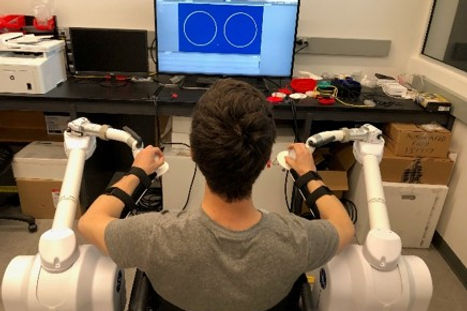
Neuromechanical Modeling and Human Motor Control
We develop techniques that enables estimation of underlying hybrid cost function of movements, variable joint impedance of individuals and spasticity in different populations. We look into motor learning and sensory decoding in both upper and lower limb tasks.
Leveraging deep reinforcement learning and advanced machine learning techniques, we also develop neuromechanically informed predictive models of human movement.

Inverse optimal control to discover the underlying cost function of movements
A novel Inverse optimal control using a gradient-based bi-level optimization
Adaptive-reference IOC (J. Weng, et al., IEEE TNSRE 2022)
Change of cost function with gait speed (J. Weng, et al., IEEE RA-L 2023)
Human motor learning
We investigate human motor learning, particularly the effect of neural plasticity and augmented sensory feedback on motor learning
Composite visual feedback decoding (M. Nazarahari et al., Journal of Neurophysiology (JNP) 2023)
Balance and Motor Learning to Ride a Hoverboard (M. Shushtari et al., Scientific Reports 2022)


Predictive Simulation of Human Movement
We have been developing predictive simulators of human movement (e.g., locomotion) using Deep RL to learn how to walk with detailed musculoskeletal models. To achieve that we used Neuromechanical reward functions and a curriculum learning framework.
Natural walking with musculoskeletal models using deep reinforcement learning (J. Weng, et al., IEEE RA-L 2021)
Quantitative Modeling of Spasticity
We develop sensors and algorithms for quantitative modeling of spasticity.
Quantitative Modeling of Spasticity (Y. Cha and A. Arami, Sensors 2020)
Simple tool to measure spasticity in Spinal Cord Injury (A. Arami et al., ICORR 2017)


Joint Mechanical Impedance Identification
We have been developing robotic tools and data-driven algorithms to accurately estimate variable joint mechanical impedance which provides insights into how our nervous system stabilizes our motion.
Clustering-based Identification of Joint Impedance during Walking (A. Arami et al., TNSRE 2020)
A Cable-driven Robotic System for Identification of Lower-limb Neuromechanics (H.-Y. Huang et al., TBME 2020)
Influence of posture, applied force and perturbation direction on hip joint viscoelasticity (H.-Y. Huang et al., TNSRE 2020)
